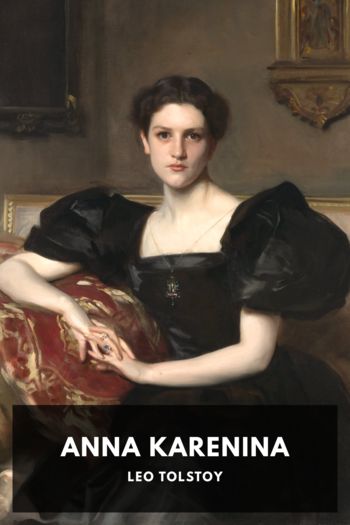What Is Art? Leo Tolstoy (good books to read for 12 year olds TXT) 📖

- Author: Leo Tolstoy
Book online «What Is Art? Leo Tolstoy (good books to read for 12 year olds TXT) 📖». Author Leo Tolstoy
Such will be one difference between present and future art. Another difference will be that art will not be produced by professional artists receiving payment for their work and engaged on nothing else besides their art. The art of the future will be produced by all the members of the community who feel the need of such activity, but they will occupy themselves with art only when they feel such need.
In our society people think that an artist will work better, and produce more, if he has a secured maintenance. And this opinion would serve once more to show clearly, were such demonstration still needed, that what among us is considered art is not art, but only its counterfeit. It is quite true that for the production of boots or loaves division of labour is very advantageous, and that the bootmaker or baker who need not prepare his own dinner or fetch his own fuel will make more boots or loaves than if he had to busy himself about these matters. But art is not a handicraft; it is the transmission of feeling the artist has experienced. And sound feeling can only be engendered in a man when he is living on all its sides the life natural and proper to mankind. And therefore security of maintenance is a condition most harmful to an artist’s true productiveness, since it removes him from the condition natural to all men—that of struggle with nature for the maintenance of both his own life and that of others—and thus deprives him of opportunity and possibility to experience the most important and natural feelings of man. There is no position more injurious to an artist’s productiveness than that position of complete security and luxury in which artists usually live in our society.
The artist of the future will live the common life of man, earning his subsistence by some kind of labour. The fruits of that highest spiritual strength which passes through him he will try to share with the greatest possible number of people, for in such transmission to others of the feelings that have arisen in him he will find his happiness and his reward. The artist of the future will be unable to understand how an artist, whose chief delight is in the wide diffusion of his works, could give them only in exchange for a certain payment.
Until the dealers are driven out, the temple of art will not be a temple. But the art of the future will drive them out.
And therefore the subject-matter of the art of the future, as I imagine it to myself, will be totally unlike that of today. It will consist, not in the expression of exclusive feelings: pride, spleen, satiety, and all possible forms of voluptuousness, available and interesting only to people who, by force, have freed themselves from the labour natural to human beings; but it will consist in the expression of feelings experienced by a man living the life natural to all men and flowing from the religious perception of our times, or of such feelings as are open to all men without exception.
To people of our circle who do not know, and cannot or will not understand the feelings which will form the subject-matter of the art of the future, such subject-matter appears very poor in comparison with those subtleties of exclusive art with which they are now occupied. “What is there fresh to be said in the sphere of the Christian feeling of love of one’s fellow-man? The feelings common to everyone are so insignificant and monotonous,” think they. And yet, in our time, the really fresh feelings can only be religious, Christian feelings, and such as are open, accessible, to all. The feelings flowing from the religious perception of our times, Christian feelings, are infinitely new and varied, only not in the sense some people imagine—not that they can be evoked by the depiction of Christ and of Gospel episodes, or by repeating in new forms the Christian truths of unity, brotherhood, equality, and love—but in that all the oldest, commonest, and most hackneyed phenomena of life evoke the newest, most unexpected and touching emotions as soon as a man regards them from the Christian point of view.
What can be older than the relations between married couples, of parents to children, of children to parents; the relations of men to their fellow-countrymen and to foreigners, to an invasion, to defence, to property, to the land, or to animals? But as soon as a man regards these matters from the Christian point of view, endlessly varied, fresh, complex, and strong emotions immediately arise.
And, in the same way, that realm of subject-matter for the art of the future which relates to the simplest feelings of common life open to all will not be narrowed but widened. In our former art only the expression of feelings natural to people of a certain exceptional position was considered worthy of being transmitted by art, and even then only on condition that





Comments (0)